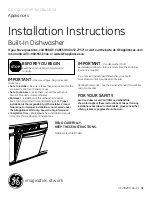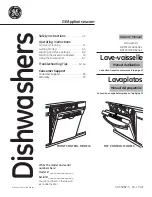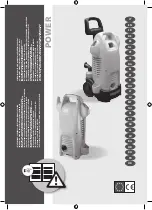
9
Washing Hints
Before loading the laundry
Never wash whites and coloureds together. Whites may lose
their «whiteness» in the wash.
New coloured items may run in the fi rst wash; they should
therefore be washed separately the fi rst time.
Make sure that no metal objects are left in the laundry (e.g. hair
clips, safety pins, pins). Button up pillowcases, close zip fasteners,
hooks and poppers. Tie any belts or long tapes.
Remove persistent stains before washing. Rub particularly
soiled areas with a special detergent or detergent paste.
Treat curtains with special care. Remove hooks or tie them
up in a bag or net.
Maximum Loads
Recommended loads are indicated in the «Programme
Table».
General rules:
Cotton, linen:
tub full but not too tightly packed;
Synthetics
: tub no more than half full;
Delicate fabrics and woollens:
tub no more than one third full.
Washing a maximum load makes the most effi cient use of
water and energy. For heavily soiled laundry, reduce the load
size.
Laundry weights
The following weights are indicative:
Sorting The Laundry
Follow the wash code symbols on each garment label and
the manufacturer’s washing instructions. Sort the laundry as
follows: whites, coloureds, synthetics, delicates, woollens.
Temperatures
Hot
for normally soiled white cottons and linen
(e.g. tea cloths, towels, tablecloths, sheets...)
Warm
for normally soiled, colour fast garments (e.g.
shirts, night dresses, pyjamas....) in linen,
cotton or synthetic fi bres and for lightly soiled
white cotton (e.g. underwear).
Cold
for delicate items (e.g. net curtains), mixed
laundry including synthetic fi bres and wool-
lens bearing the label «pure new wool, ma-
chine washable, non-shrink».
bathrobe
1200 g
napkin
100 g
quilt cover
700 g
sheet
500 g
pillow case
200 g
tablecloth
250 g
towelling towel
200 g
tea cloth
100 g
night dress
200 g
ladies’ briefs
100 g
man’s work shirt
600 g
man’s shirt
200 g
man’s pyjamas
500 g
blouse
100 g
man’s underpants
100 g
Removing Stains
Stubborn stains may not be removed by just water and deter-
gent. It is therefore advisable to treat them prior to washing.
Blood:
treat fresh stains with cold water. For dried stains, soak
overnight in water with a special detergent then rub in the
soap and water.
Oil based paint:
moisten with benzine stain remover, lay the
garment on a soft cloth and dab the stain; treat several times.
Dried grease stains
: moisten with turpentine, lay the garment
on a soft surface and dab the stain with the fi ngertips and a
cotton cloth.
Rust:
oxalic acid dissolved in hot water or a rust removing
product used cold. Be careful with rust stains which are not
recent since the cellulose structure will already have been
damaged and the fabric tends to hole.
Mould stains:
treat with bleach, rinse well (whites and fast
coloureds only).
Grass:
soap lightly and treat with bleach (whites and fast
coloureds only).
Ball point pen and glue:
moisten with acetone (*), lay the gar-
ment on a soft cloth and dab the stain.
Lipstick:
moisten with acetone as above, then treat stains
with methylated spirits. Remove any residual marks from
white fabrics with bleach.
Red wine:
soak in water and detergent, rinse and treat with ace-
tic or citric acid, then rinse. Treat any residual marks with bleach.
Ink:
depending on the type of ink, moisten the fabric fi rst with
acetone (*), then with acetic acid; treat any residual marks on
white fabrics with bleach and then rinse thoroughly.
Tar stains:
fi rst treat with stain remover, methylated spirits or
benzine, then rub with detergent paste.
(*) do not use acetone on artifi cial silk.
Содержание XHE
Страница 18: ...18 Notes...




































